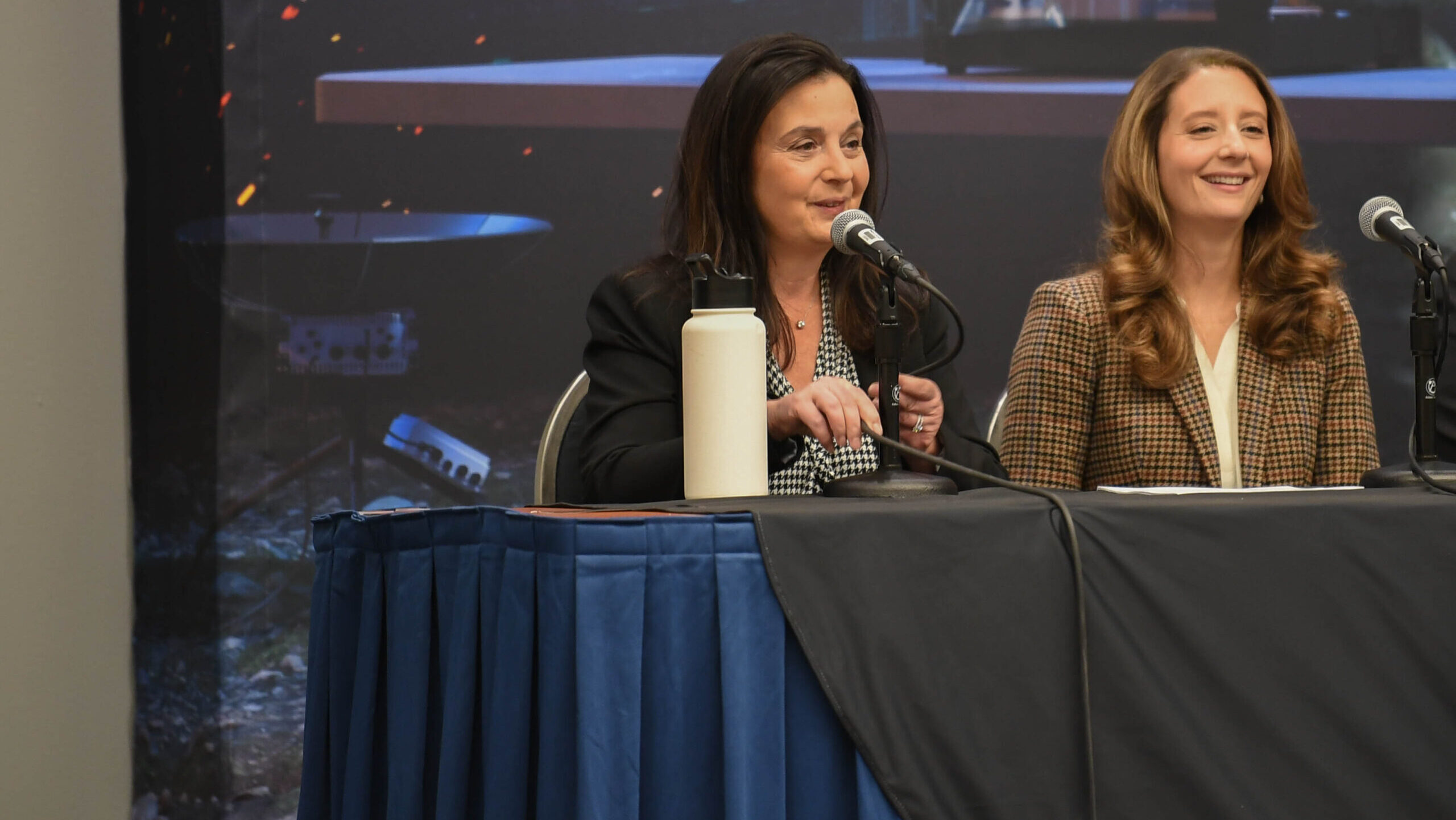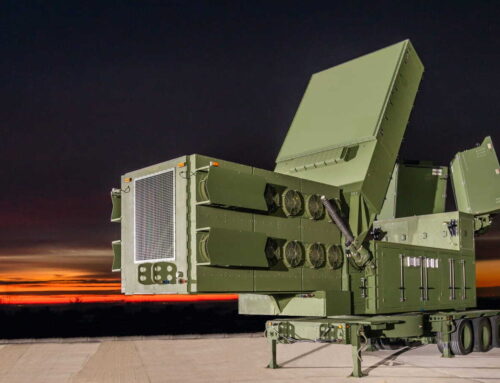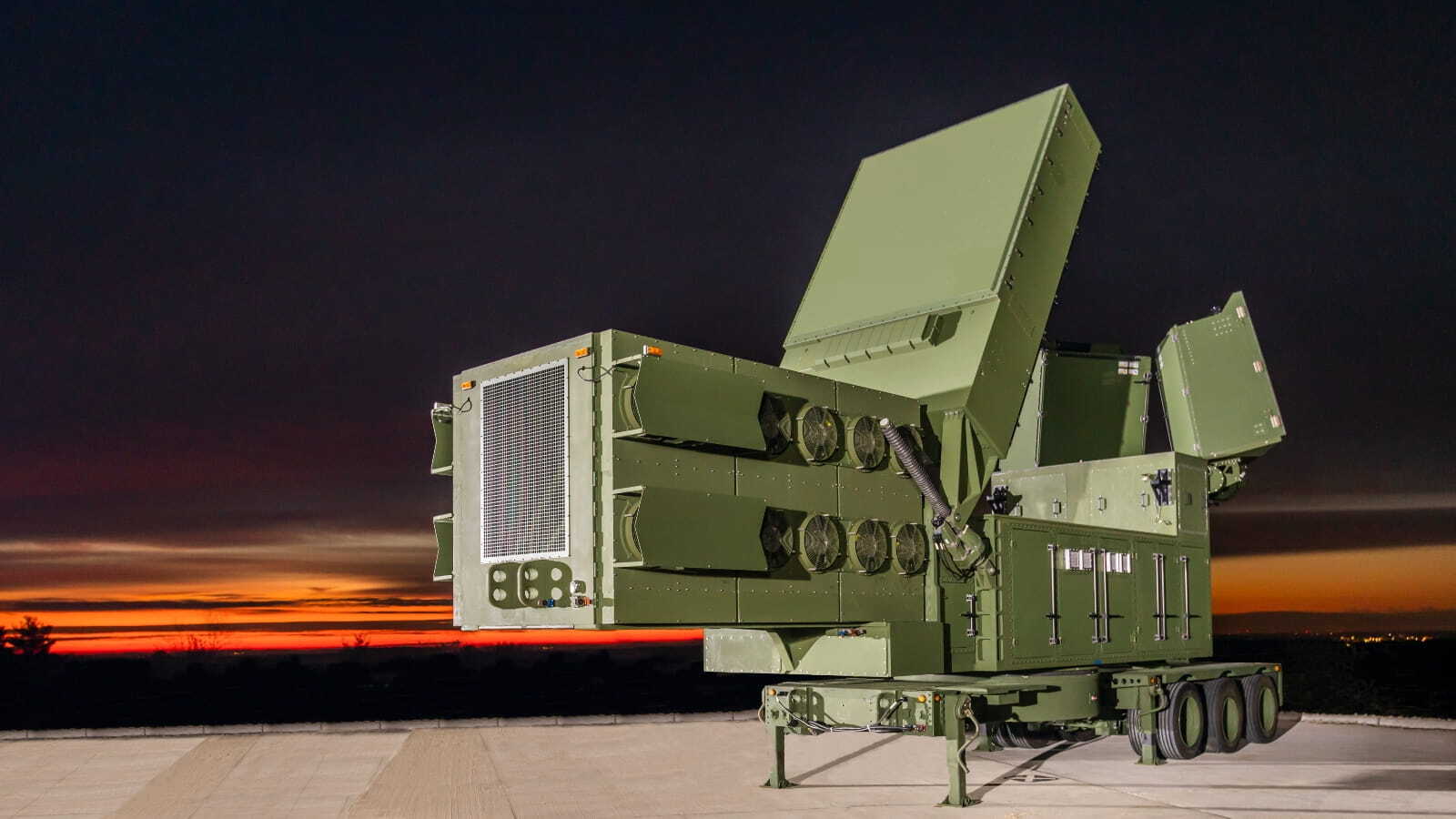Jennifer Swanson, left, the deputy assistant secretary of the Army for Data, Engineering and Software, gives her remarks during the Engineer Hour Panel Discussion titled “Army Engineers Making a Difference in Europe and the Pacific,” at the Walter E. Washington Convention Center in Washington, D.C., Oct. 11, 2023. (US Army photo by Pfc. Brandon L. Perry)
AUSA — The Army’s massive and much-debated “modern software development” contract is headed for a third and final revision due out next month, officials told a standing-room-only audience here at the Association of the US Army conference Wednesday.
Officially called the Multiple Award Indefinite Quantity Indefinite Delivery Contract for Modern Software Development, the proposal is now on its second major revision, incorporating significant changes suggested by contractors. Comment on this draft closes on Oct. 25, so service officials can try to get a final version ready for an industry day tentatively scheduled for Nov. 7. But if the draft isn’t ready, they’ll push the industry day back “because it doesn’t make sense to have it without the last draft out,” said deputy assistant secretary for software Jennifer Swanson.
“Please, please, give us feedback,” she told the contractors packing the room. “We are absolutely reviewing all of it, and I think you’ve seen probably some significant changes between the first draft and the second draft [already].”
Swanson said the next draft will be the last “because we have to call it at some point. We could do this forever.”
The official Request For Proposals launching the competition will come out in December or early January, she said, but added, “I pledge to you, I will not drop it on Christmas Eve.”
High Stakes, Big Changes
The stakes are high because the 10-year “multi-award” contract is meant as an umbrella to modernize a wide swathe of Army software programs, although not all. The initial competition next year would select a pool of preferred vendors, who would then compete for individual programs’ software needs as “task orders” under the umbrella contract, with a maximum value of $10 billion. The service will have “on-ramps” to bring promising new companies into the pool and “off-ramps” to kick out underperformers, but getting in the preferred pool is still a huge advantage for a firm.
But on reading earlier versions, many contractors grew worried about the details. In particular, critics charged the service plans to reinvent the wheel by developing bespoke software through cumbersome “cost-plus” procurement processes, rather than simply buying proven commercial code at market rates and then making a minimum of necessary tweaks.
In the recently released second draft, arguably the most significant change is that the Army now plans to give companies formal input into how to write the very contracts they’re competing for.
“We want industry to propose what contract type you think is best,” said Swanson.
That’s a big deal. Normally, government officials decide, behind closed doors, what contract structure is best suited to their program. There’s a wide variety of options, but in simplified terms, there are two extremes. If they’re buying a product or service that already exists and for which there’s a commercial market, they’ll ask companies to bid a “firm-fixed price.” If they’re asking industry to develop something uniquely military, they’ll ask for “cost-plus” bids that allow companies to make a percentage of profit atop whatever their expenses end up being.
Historically, though, officials decide which structure to use, and companies can take it or leave it. The revised language released Oct. 11, however, says that when companies submit a bid, they can also recommend a contract structure.
The ultimate decision will still be up to the Army. But the service hopes that opening this avenue for input will alleviate industry concerns about blinkered bureaucrats saddling then with onerous and inappropriate procedures.
‘I Don’t Want To Evaluate Your LLM’
Officials are already talking about some further changes they plan for the third revision due in November. For example, firms competing for a place in the preferred pool will be judged, in large part, by their performance on a “tech challenge” — and the third draft will make it explicit that using AI-generated code on that challenge now counts as cheating.
“We had in the second draft that you could use GenAI tools to generate code for the tech challenge,” Swanson said. “We’re going to take that out … I don’t want to evaluate your LLM; I want to evaluate you.”
The third draft will also clarify other rules for the tech challenges, officials said, and incorporate industry input on performance metrics used to judge the winners.
Service officials are even considering changing the contract’s name to de-emphasize the contentious “development” aspect. Roaming the AUSA conference, “we had some candid conversations about the modern software — I’m not going to say ‘development’ — contract,” said Col. Matthew Paul, project manager for the service’s IPPS-A personal & payroll system.
“I don’t like ‘development,’” he told the AUSA seminar. “We’re crowdsourcing the name.”
Paul’s not the only one. At the same panel, the head of the Army’s new Digital Capabilities Contracting Center of Excellence (DC3OE), Danielle Moyer, referred to it as “the M-S-question-mark contract.”
If, after all these changes in name and substance, a company still doesn’t like how this contract is written then they don’t have to compete for it, officials said — echoing recent statements by their boss, Army acquisition chief Doug Bush.
“You don’t have to play on this one,” said Young Bang, Bush’s principal civilian deputy and a former commercial software exec himself, standing up from the audience to speak during the panel. “There are plenty of other contract vehicles out there. … This is just another tool, [developed] based on your feedback.”
The initial competition to get into the preferred-vendor pool will be arduous and expensive, Bang and other officials acknowledged. But that’s on purpose, they said, because the hurdle should be high to get first shot at up to $10 billion in task orders over a decade.
Is the effort worth the potential payoff? “That’s a business decision you have to make,” said Bang.










